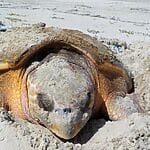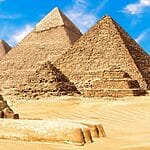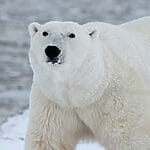Deers are members of the Cervidae family, of which there are two main groups. There are many members of the Cervidae family, with the main features they have include having deers and hooves.
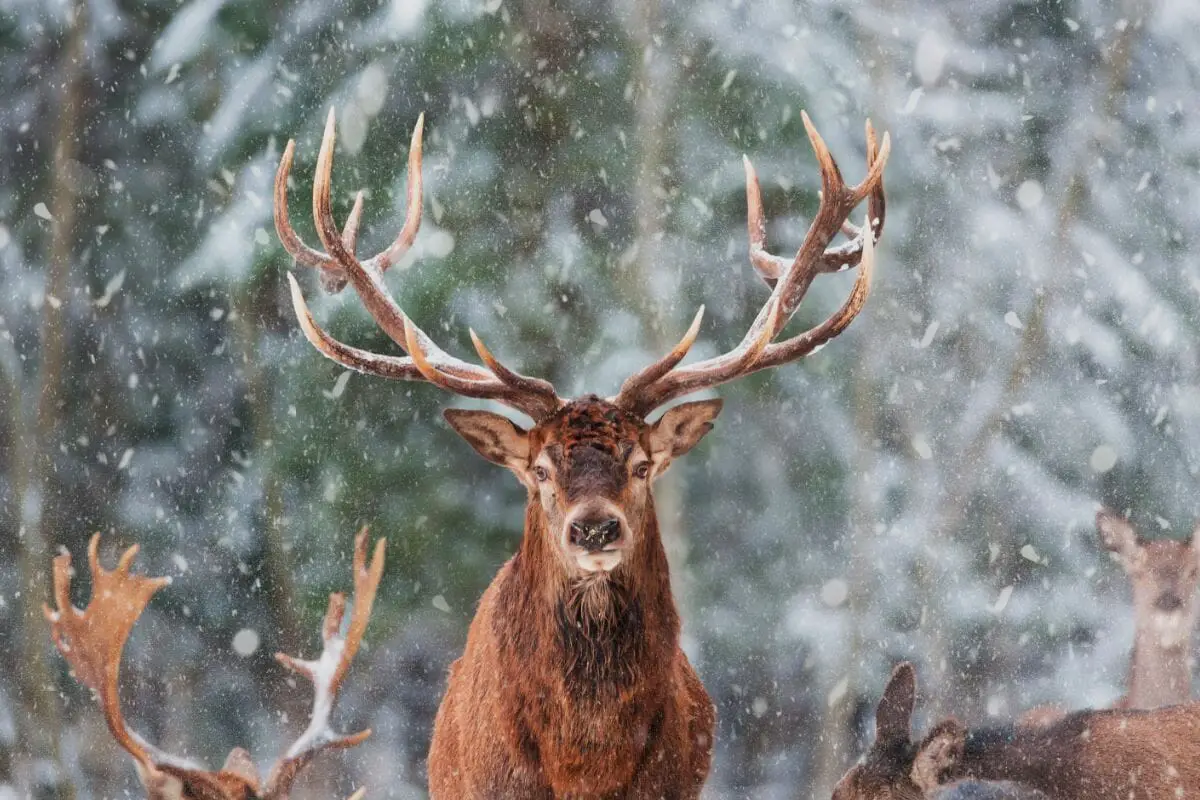
Naturally, there are many animals similar to deer that share similar traits. However, they also share similar traits and characteristics with the Bovidae family.
In this article, we’ve found a selection of animals in the Cervidae and Bovidae families that share a striking resemblance to deers. Here are some of the most well-known.
Animals That Look Like Deer
Animals that resemble deer are diverse and fascinating, each possessing unique characteristics. Here’s list of animals that look like a deer.
Muntjac
The muntjac are a type of small deer that are also known as barking deer or rib-faced deer. They are native to both South and Southeast areas in Asia. You can find muntjacs in rainforests and anywhere close to a water source.
There are many types of muntjac, but one thing they have in common is that the males have short antlers, and tusks to fight for territory.
These tusks make them distinct from other deer, as not all species of deer have these canine teeth that point downward.
Elk
Also known as the wapiti, the elk is one of the largest species in the Cervidae, and it’s one of the largest animals that you can find on land in North America.
You can regularly find elk in forest regions, and the male elk have noticeably larger antlers that shed each year. Their antlers are made of bone.
During fall, they will grow a thicker coat of fur to prepare for the winter, which they will remove in the summer by rubbing against trees. Females and males both have neck manes, and their fur often changes colors depending on the season.
Red Deer
These resemble deer and are part of the largest deer species. A male, often similar to common deer, is called a stag or hart, while the female is referred to as a hing. They can be found in the Atlas Mountains in North America, and are a little bit larger than elks.
During the fall months, the stags will grow a neck mane, while the hinds will not. Likewise, only the stags have antlers that begin to grow in the spring and shed at the end of winter each year.
Their summer coats tend to be brown with a reddish tint, with some having spots on their backs. In the winter their coat is grayer, and they have a distinct rump patch.
Dama
The dama is also known as the fallow deer, and it is one of the smaller species of deer. Their antlers are a distinct shape. In countries such as Croatia and Serbia, the dama is called the shovel deer due to its distinctive shape.
However, only the buck has antlers. The most commonly known type of dama is the European fallow deer. The coat color depends, but there are variations such as chestnut with white mottles, with the tail having a black stripe.
There are black damas and those who don’t have black on their tail, as well as cream-colored dama.
Reindeer
Otherwise known as caribou in North America, the reindeer is especially known for appearing in traditional Christmas stories. There are many subspecies of reindeer, all of which are under various stages of protection by the IUCN.
It is normal for the males to grow antlers, and they are known for being the second largest of the Cervidae. Their fur varies in color, and it depends on the season and the species.
Usually, Northern populations have lighter fur, while southern species have darker pelts. Curiously, their hooves will adapt to the season.
Roe
The roe is a species of European deer. They can be found throughout Europe, the Mediterranean, Scandinavia, and northern parts of Iran and Iraq.
Of all deers, they are relatively small compared to others, with the buck only being slightly larger than the doe. However, there are rare exceptions where the roe is equal size or even smaller than the does.
When the conditions are right, bucks can grow their antlers to a length of 10 inches, often with two or three points. When they shed them, they will often regrow their antlers almost immediately after.
Antelope
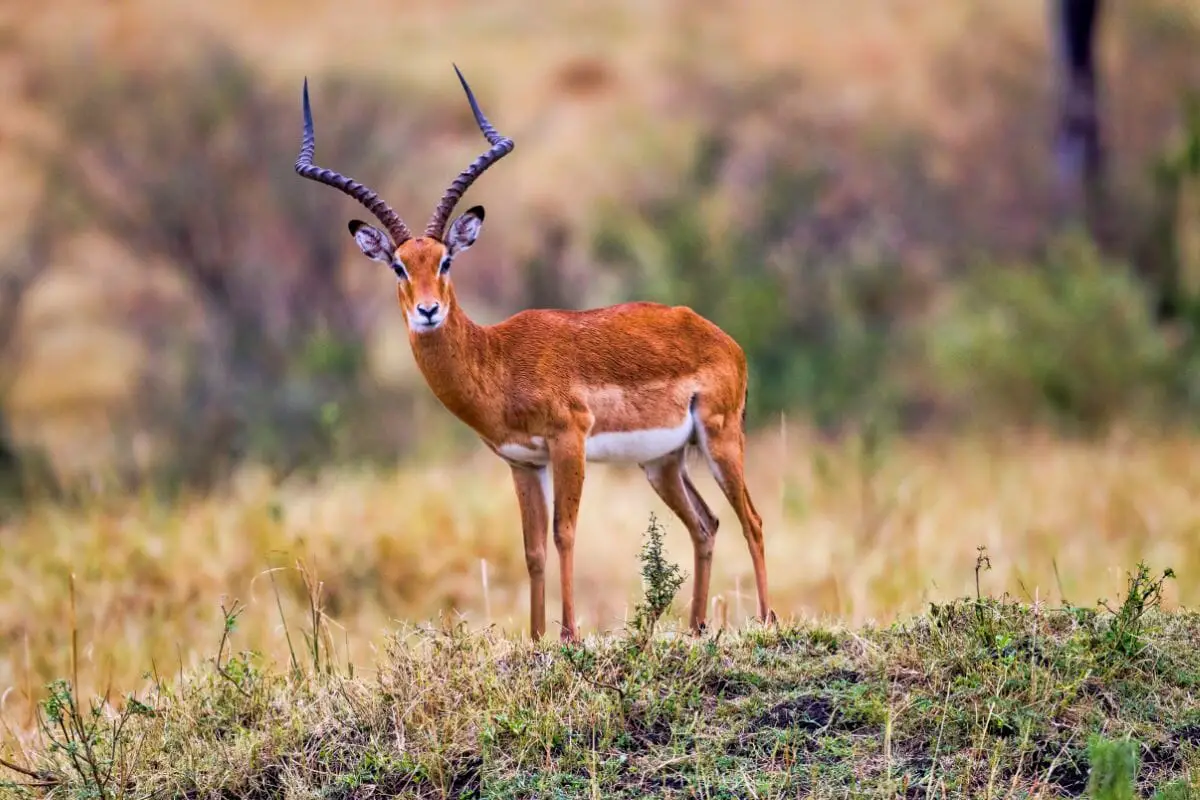
There are many different types of antelope. Despite looking like deer, they aren’t part of the Cervidae family, but are instead Bovidae. Despite looking like deers, they don’t have antlers, as those are shed and re-grown over time.
However, they do have horns which continuously grow over time. You’ll mostly find antelopes in Africa and Eurasia, just as you would find common deer.
However, in America, the pronghorn may be mistaken for being a part of the antelope family, despite not being a part of the antelope family.
Gazelle
These gazelles are part of the antelope species, and have their own subspecies. They are known for their speed, and look similar to deer. They are generally quite small, and they’ll mostly be found in Africa, India, and Asia.
Most gazelles are considered threatened by the IUCN, and have numerous predators that prey on them.
Male gazelles are known to have long, curved horns that continuously grow. However, females don’t have horns, in a similar manner to how many does don’t have antlers.
Chital
These spotted deers are also known as axis deer, and can be found in India. They are an average size for deers, neither being too large or too small. Chital stags are known for having antlers and being larger than does.
You’ll find that the stag’s antlers can grow up to a meter long, and are known to have three distinct prongs. The spotted deer is known as such for the light spots that cover its brown fur.
The chital’s abdomen, throat, and tail are all white. Generally, they can also be found in Australia, the United States, and in Croatia, much like the greater kudu.
Dik-Dik
These small antelopes can be found in the bushlands of eastern and southern parts of Africa. They are named for the shrill sounds that the females make, and are considerably smaller than deer. However, they look very similar, having slim legs and hooves.
Generally only males will grow horns, which are small and pointed. Much like other antelopes, their horns will continue to grow unless they are groomed. Generally, they have a similar color scheme to deers, having gray-brown fur with tan legs and stomachs.
Moose
The North American moose has often been mistakenly referred to as an elk in Eurasia. A male moose will often find a mate depending on the size of its antlers. Males will often fight their rivals using their antlers.
Like other types of deer, the female doesn’t have antlers. Much like the rest of the deer family, moose will have two layers of fur: guard hairs and a wool undercoat.
They are one of the largest members of the Cervidae family, being larger than even the wapiti, and is one of the largest species on land. They are generally only a little bit smaller than some bison.
Barasingha
Otherwise known as the swamp deer, the barasingha is classed as vulnerable by the IUCN. They can be found throughout the Indian subcontinent, and have three prongs on their antlers.
Only the male grows antlers once they have matured, with younger barasingha not having antlers and looking similar to females. Generally, the females are paler than male barasingha, and both are known to have a reddish-brown fur that gives them a look similar to a roan antelope.
However, their pelts become darker in the summer. Like the urial, the population has since been in decline as they are poached for antlers and meat.
Blackbuck
The blackbuck is one of the most well-known Indian antelopes, with brown fur and white patches on their stomach and the inside of their legs. Unlike some species, the female blackbuck may also grow horns.
It is a moderate size, but the males tend to be larger and heavier than females. The females are paler than male blackbucks. The blackbuck’s horns often grow into a V-shape, and may vary depending on where the blackbuck is born.
Over the years, they, much like the urial, have become extinct in both Pakistan and Bangladesh, with only a single surviving group in Nepal.
Nyala
The spiral-horned antelope is native to southern parts of Africa, and is maroon or brown, but males tend to have darker fur. Females and young nyala tend to have white stripes that make them distinct from males.
They are named for the spiral-horns that males grow, which make them distinct. Their horns, much like those of a roan antelope, can grow up to 33 inches long and have yellow tips, with one or two tips. They have more vertical stripes on females, with males having fewer stripes.
Final Thoughts
As you can see, there are many animals that look like deer, whether they are part of the Cervidae family, or the Bovidae. Deers are known for their males having antlers, however instead of antlers, Bovidae have horns that continuously grow.
Many animals bear a striking resemblance to deer, characterized by features such as spiral horns, slender legs, and deer-like body shapes. Species like the Chinkara and the Vietnamese Mouse Deer, with their reddish-brown coats and white markings, often lead to them being mistaken for deer.
The Giant Sable and Nyala, native to Africa, and wild sheep of Southern Africa, with long legs and large ears, also share similarities in appearance and habitat.
These ungulates, although diverse in size and range, from the small mouse deer to the tall and robust wild sheep, demonstrate convergent evolution in their deer-like appearance and feeding habits, highlighting nature’s intricate tapestry of life.
These are only a few examples of animals that share their appearances with deer, but there are many more that also exist. If you want to know more animal facts, then why not check out the rest of our site?




